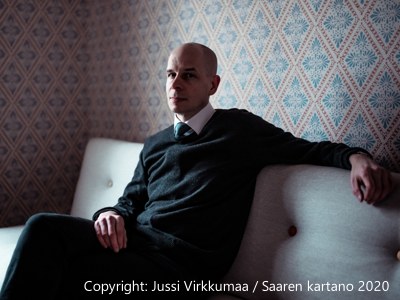Semi-scenic collage based on texts by Robert Walser and Carl Seelig
I. Zeit (Walser, from Saite und Sehnsucht, ca. 1900)
II. 26.7.1936 (Seelig, from Wanderungen mit Robert Walser)
III. Beschaulichkeit (Walser, ca. 1930)
IV. aus Jakob von Gunten (Walser, 1908)
V. Intermezzo I
VI. 16.5.1943 (Seelig, from Wanderungen)
VII. Müdigkeit (Walser, from the 1909 collection)
VIII. Intermezzo II
IX. Weihnachten 1956 (Seelig, from Wanderungen)
X. Und ging (Walser, from the 1909 collection)
Publisher: Ms.
Duration: ca. 20′
FP: Dec 6, 1997, Dresden (Andreas Jäpel, Andreas Sparberg, ensemble courage, cond.: Benjamin Schweitzer)
Further performances:
May 17, 2002, Leipzig
Aug 10, 2008, Ligerz (Swiss Premiere, Ensemble of the Ligerz Opera Workshop, Cond.: Titus Engel)
Introduction:
Und ging is some kind of byproduct of my intensive preoccupation with the works of Robert Walser in preparation of my chamber opera Jakob von Gunten. The composition could be described as a kind of a documentary feature on Walser’s life and work. The framework is made up of three excerpts from Wanderungen mit Robert Walser of his patron (and custodian) Carl Seelig, accentuating the biographical aspects. Those ‘marginal’ texts are combined with four of Walser’s poems which have been chosen for their irony, scurrility, but also their delicate melancholy. Positioned in between this collection of texts we find an excerpt from Walser’s novel Jakob von Gunten, which is connected to Walser’s utterances which have been reported by Seelig (Jakob von Gunten being one of Walser’s literary ‘alter egos’). In addition, we find two Intermezzi serving as instrumental comments and formal markings.
The musical facture tries to adopt both ligthness and the double bottom of Walser’s writing: repeating superficially meaningless sound fragments, a minimum of gestures, whose various shapes can be traced through all instrumental parts, often close cessation, but at times surprisingly bursting out. Each of the ten movements is given a basic structure and character by a different combination of instruments and singer/narrator. The dramaturgy leads to a ‘negative climax’, when the work is concluded by the recitation of the eponymous poem without any musical comment.
